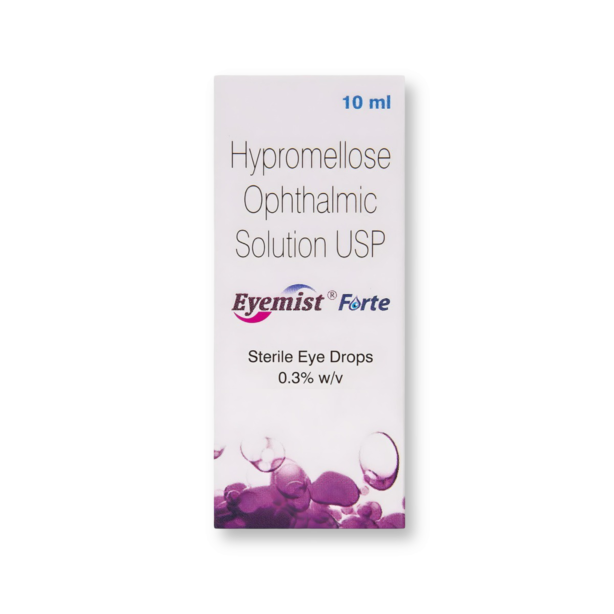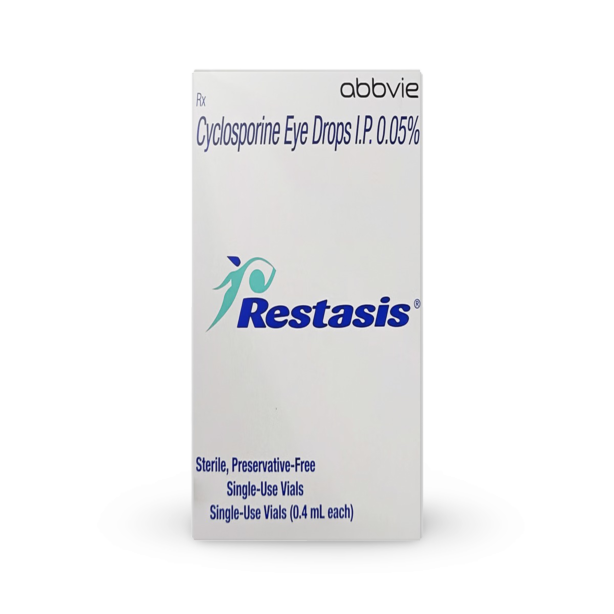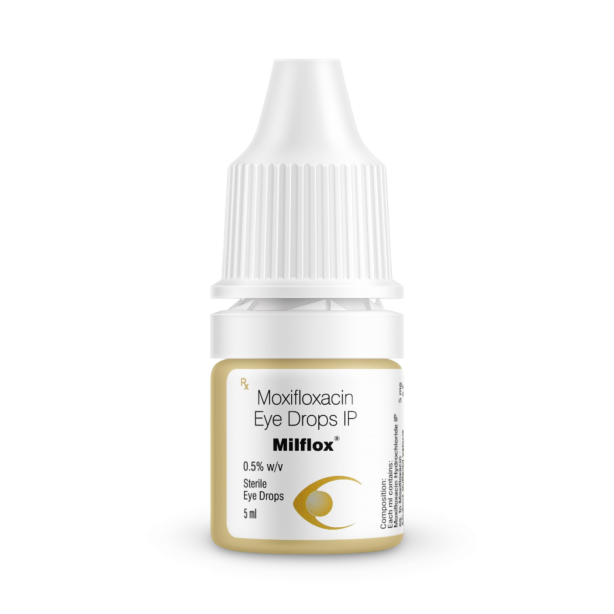Woke up with red, irritated eyes and noticed your vision seems a little blurry? You are not alone. Blurry vision is a common but often overlooked symptom of Conjunctivitis or Pink eye, which causes inflammation of the conjunctiva (eye membrane). This inflammation gives the eye a pinkish or reddish appearance, which is how it gets its name.
While most expect symptoms like redness or discharge, blurry vision can surprise them. The cause of that blur can vary, depending on whether a virus, bacteria, or allergies trigger it.
This article explains what causes blurriness, how long it can last, treatments, and more, so read on to learn more about pink eye blurry vision.
Can pink eye cause blurry vision?
Many people with pink eye notice a change in the clarity of vision alongside redness and discomfort. This blurred vision is usually temporary but can be distressing when it interferes with daily tasks.
Here’s why pink eye can cause your vision to blur:
- Increased tear production: Excess tears can make the eye’s surface uneven, bending light unevenly and leading to blurry vision.
- Discharge and debris: Mucus or pus from bacterial or viral Conjunctivitis can coat the eye surface, blocking vision until the secretions are cleared.
- Conjunctival swelling: Inflammation of the conjunctiva (the tissue that covers the whites of your eyes) causes redness and slightly changes the eye’s shape, leading to light scattering, reduced visual sharpness, and other symptoms.
- Corneal involvement: When infection or inflammation extends to the cornea (Keratitis), even minor lesions can cause significant blurring.
Save up to 90% on your medicine bills

Eyemist Forte 10 ml

Restasis 0.05% Ophthalmic Emulsion 0.4ml

Milflox 0.5% 5 ml

Pred Forte 10 ml
Types of Conjunctivitis and their impact on vision
Not all causes of pink eye are the same—each type can affect your vision differently, and here is how:
Viral pink eye blurry vision
A viral pink eye often creates more noticeable visual disturbances than other types. This form is highly contagious and frequently associated with upper respiratory infections.
- The virus can sometimes affect the cornea, creating small lesions that interfere with vision.
- This type typically produces a watery discharge that is not thick and can blur vision. It usually begins within one eye and spreads to the other, and it can occur with the common cold or flu.
- Symptoms may worsen before they improve, with blurriness peaking around days 3-5.
- Vision usually returns to normal as the infection resolves, typically within 1-2 weeks.
These viral infections typically need to run their course, but several measures can help manage blurry vision. Cold compresses reduce swelling and discomfort, while artificial tears relieve dryness and improve vision clarity. Rest supports your body’s natural healing process. Your doctor may prescribe antiviral medications in severe cases, particularly if the cornea becomes involved.
Bacterial pink eye and blurry vision

Due to their nature, bacterial eye infections create different visual symptoms. This form responds well to antibiotics and tends to produce more discharge.
- Thick, purulent, or pus-filled discharge significantly blurs vision until wiped away.
- Vision typically clears temporarily after cleaning discharge, only to blur again as more discharge forms.
- With prompt antibiotic treatment, visual symptoms often improve within 24-48 hours.
While it may resolve on its own in 2 to 5 days, antibiotic treatment speeds recovery and prevents the spread of this highly contagious infection. Your doctor will likely prescribe antibiotic eye drops or ointments such as Ciprofloxacin or Erythromycin.
Using warm compresses helps remove discharge that clouds vision, while properly cleaning eyelids and lashes removes crusts that can obstruct sight. Even if symptoms improve rapidly, completing the full antibiotic course is essential to prevent recurrence and ensure complete resolution of blurry vision.
Allergy-related pink eye with blurry vision
When allergies trigger Conjunctivitis, the impact on vision tends to be milder and directly related to exposure to allergens. This form isn’t contagious but can be chronic if allergies persist.
- Blurry vision tends to be milder and fluctuates with allergy severity.
- Visual disturbances often improve quickly with antihistamines or after allergen removal.
- Rubbing itchy eyes can temporarily worsen blurriness.
Allergic Conjunctivitis often improves with allergy treatment and avoiding triggers like pollen or pet dander. Cool compresses can reduce itching and swelling. Antihistamine eye drops (e.g., Ketotifen) or steroid drops may be prescribed for persistent cases. Severe reactions may require oral Antihistamines, but consult a doctor first.
Preventing pink eye blurry vision
Good hygiene is the key to prevention for all forms of Conjunctivitis.
- Wash your hands thoroughly and often, especially after touching your eyes.
- Avoid sharing towels, any eye makeup, or contact lens cases.
- Disinfect surfaces like doorknobs and shared electronics.
- Replace or change your eye makeup every 3–6 months to prevent bacterial growth.
Managing daily activities with blurry vision
Temporary vision changes may require lifestyle adjustments until clarity returns.
- Avoid driving or operating machinery if your vision is significantly impaired.
- Use good lighting for reading or close work to reduce eye strain.
- Take regular breaks from screens and consider blue‑light filters.
- Consider wearing non‑prescription reading glasses to ease focus challenges.
Conclusion
Pink eye and blurry vision typically go hand in hand, but with proper care, both symptoms usually resolve without lasting issues. Viral cases may take 1-2 weeks to clear, while bacterial infections respond quickly to antibiotics, often improving within 48 hours. Allergic pink eye clears up once allergens are removed or treated.
Pink eye blurry vision can be frustrating, but the key is proper hygiene—wash hands frequently, avoid touching your eyes, and never share towels or eye products. While waiting for recovery, use artificial tears for comfort and avoid contacts altogether.
Most importantly, seek medical attention if you experience severe pain, significant vision loss, or symptoms lasting more than two weeks. Your vision should return to normal with patience and appropriate treatment as the pink eye resolves.

Frequently Asked Questions
Can swimming with pink eye worsen blurry vision?
Yes, swimming with pink eye is not recommended, as chlorine and other pool chemicals can severely irritate the inflamed conjunctiva, intensifying blurry vision and discomfort. Swimming with contagious forms of pink eye can contaminate water and spread the infection to others, particularly in unchlorinated water like lakes or improperly maintained pools.
Does blurry vision due to pink eye affect night driving ability?
Yes, the pink eye often significantly impairs night driving due to increased light scatter from inflammation and discharge. Halos around lights reduce contrast sensitivity, and general blurriness can make driving dangerous, especially at night. Avoid driving until your vision stabilizes.
Can over-the-counter eye drops help with blurry vision in pink eyes?
Yes, some over-the-counter lubricating eye drops may temporarily relieve blurry vision caused by pink eye by washing away irritants and soothing inflammation. However, they won’t treat the underlying infection. Antibiotic drops require a prescription for appropriate cases.
Is using a computer or smartphone with pink eye or blurry vision safe?
Yes, using digital devices with pink eyes won’t worsen the infection, but reduced blinking may increase discomfort and eye strain. To minimize discomfort, use devices at reduced brightness, take frequent breaks, and consider blue light filters.
When referencing outside resources, GoodrxMedicine always provides full citations. To learn more about the measures we use to maintain the quality of our content, please review our Content Information Policy.











